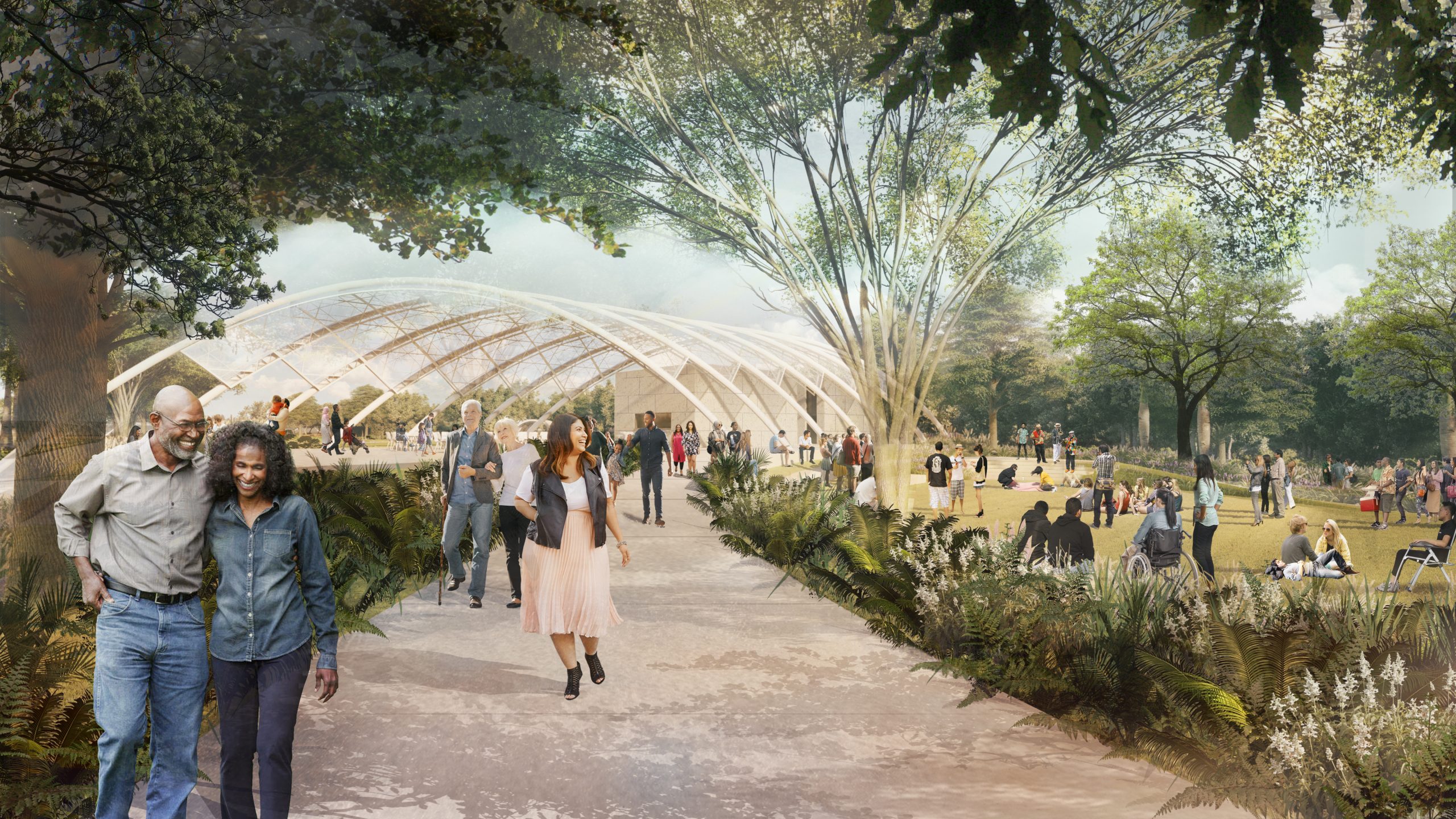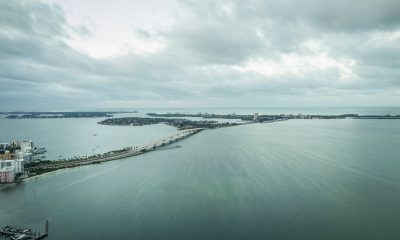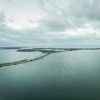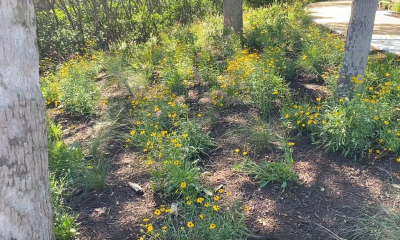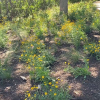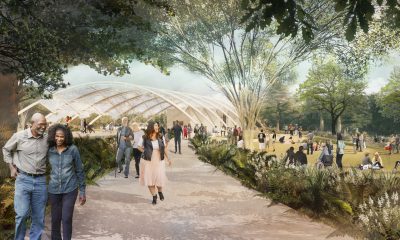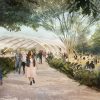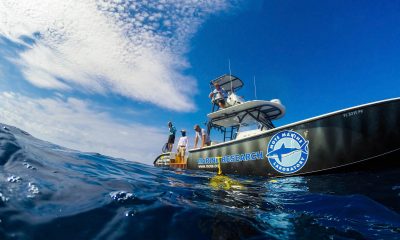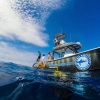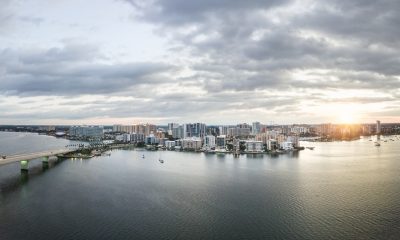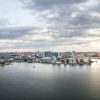The Bay: It’s Good to Be Green
Recently we have focused on the impact that The Bay, Sarasota’s 53-acre bayfront park, will have on our local waters and the surrounding environment.
Today, we move inland just a bit, to look at the impact of the green spaces that will extend from Tamiami Trail down to the half mile of natural shoreline.
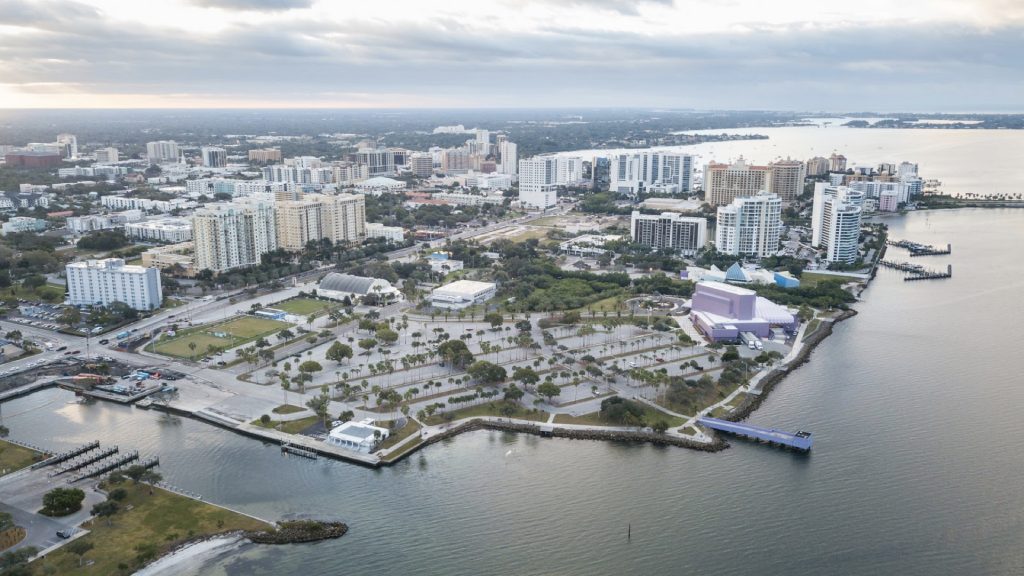
The Bay, as it stands today, is roughly 75 percent concrete, mostly parking lot, but as progress on the park continues, the area will become 75 percent open park space, with thousands of additional trees planted during the various development phases. Phase I alone, situated on the southern edge of the property, will have more than 100 new shade trees by the time the project is completed.
So, what does this mean for you, me, and our community?
According to NASA, researchers are still working out exactly why green spaces are so beneficial, but there is almost universal agreement that these spaces provide a variety of health benefits. “They encourage exercise, provide spaces for socializing, decrease both noise and air pollution, and improve our immune function. They can also help with psychological restoration; that is, green space provides a respite for our over-stimulated minds.”
I don’t know if you’re like me, but when I become stressed or anxious, I move outdoors. As a global pandemic, financial uncertainty and civil unrest have shaken our world over the last six months, I have yearned for a place where I could sit under a beautiful shade tree with a good book, taken a quiet walk with one of my dogs, or engaged in a bit of meditation as I tried to put everything into a more workable perspective.
The Bay will provide this generation, and future generations, with a place to do just that.
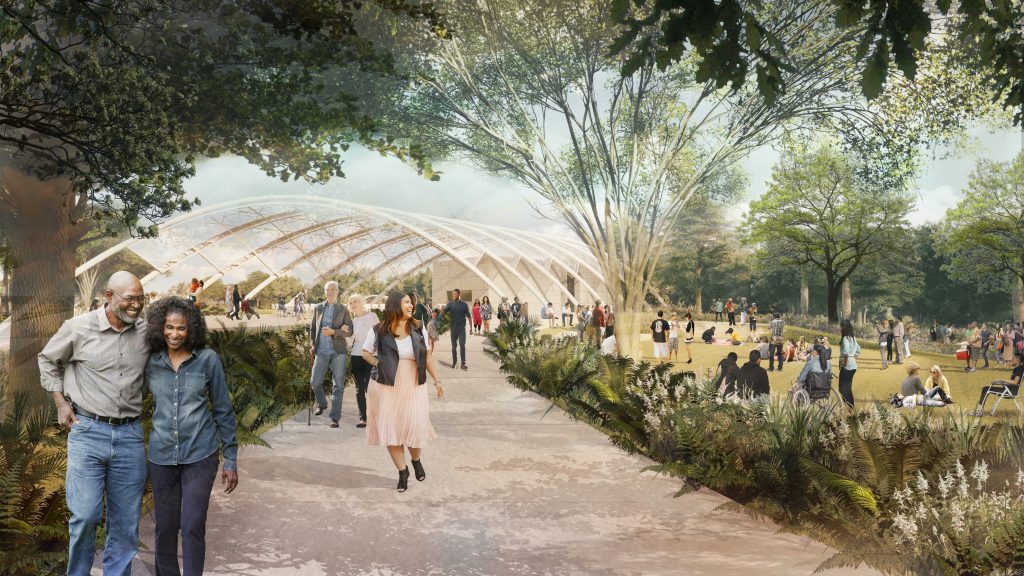
According to Chris Cianfaglione, landscape architect and arborist with Kimley-Horn, The Bay’s project team has worked hard to preserve and utilize the existing trees and vegetation on the property.
“One of the really cool things is the Mangrove Bayou located in Phase I. A lot of work and care has gone into making this basin a healthy, functioning system again,” Cianfaglione said. “Right now, they are going in and taking out decades of trash, construction debris and concrete, along with the exotic invasive species that have grown up there, and replacing it with native vegetation. When we are finished, the plantings along the Mangrove Walk will showcase a Florida-friendly palette of vegetation, creating a truly unique coastal environment,” he said.
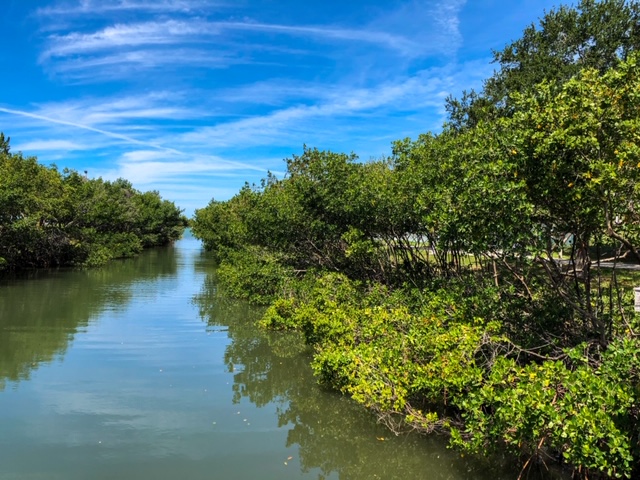
Cianfaglione noted that the steps we are taking to protect our bay waters from runoff and other problems start with the green aspects that are being done inland – such as the creation of bioswales. These are shallow, depression areas – dry ponds, essentially – filled with specially engineered soils. The bioswales help with both runoff and big rainfall events. The water filters down through the soil, down through the plants’ root systems and into the drainage infrastructure, where it is treated before it reaches the bay. There are two large bioswales currently going into the south side of the Mangrove Bayou.
Cianfaglione says the design team also worked very hard to preserve the native species of trees – sea grape trees, all different types of mangroves, buttonwood trees, palms and a handful of others that you can find on Phase I of the project. “We are also taking three of the big-specimen live oaks and some of the large buttonwoods that have somehow survived against all odds in that mostly concrete environment, and instead of cutting them down, we are relocating them,” he said.
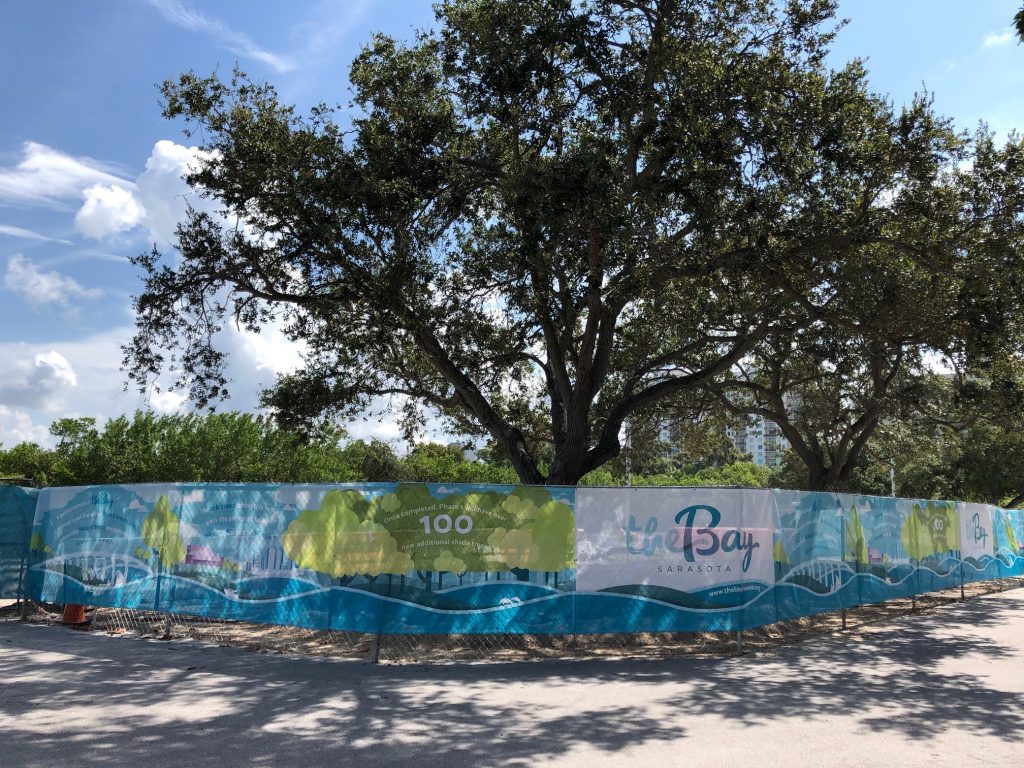
Saving these trees has numerous benefits, not the least of which is removing a tremendous amount of carbon dioxide from the atmosphere. “For example, just one of the big trees we are relocating on the Phase I site has stored more than 10,000 pounds of carbon dioxide in its trunk and root system over its lifetime. We are moving that instead of releasing it into the air. Trees of that size can remove around 1,000 pounds of carbon dioxide from our atmosphere every year, and that has a tremendous impact on our community’s health and wellness.
“Also, all of those great black olive trees located along Boulevard of the Arts will be preserved in place. We are going to great lengths to protect these trees and their root systems during construction,” Cianfaglione said. “We are putting a lot of work into making sure that the existing vegetation that is there today will be there for the next generation to enjoy, as well.”
Cianfaglione went on to say that public parks such as The Bay are critically important for a variety of reasons.
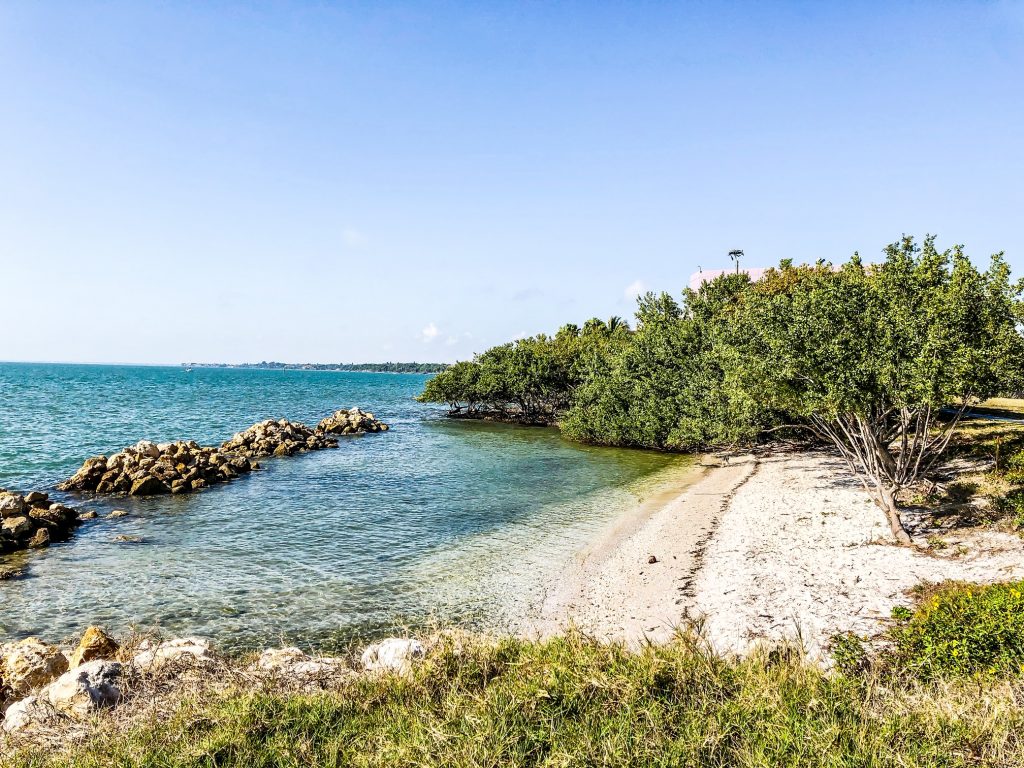
“First of all,” he said, “having public, open spaces, particularly on the waterfront, protects upland areas from sea-level rise and coastal erosion.” There are countless studies, Cianfaglione said, that show the benefits of natural vs. hardened shoreline edges. “Natural shorelines survive and perform much better than the man-made systems, especially when it comes to minimizing the long-term impacts of coastal erosion. While the seawalls are easily damaged over time, these natural systems live, grow and function with these rising tides. The mangrove roots and grasses dissipate wave action much better than walls do, so they outperform seawalls at a fraction of the cost.”
Green spaces also have a tremendous impact on urban heat island effect. Pavements and hard materials absorb and reflect heat, Cianfaglione said, so that when you have acres and acres of asphalt, it is absorbing and reflecting all of that heat and radiating it back up into the air, artificially raising the temperature in that area. “The greener an area is, the cooler it is,” he said. When you talk about creating a new urban park or forest, you are talking about the health and future of your community, he added.
About the Author: Gayle Guynup is a life-long Sarasota resident and former editor at the Sarasota Herald-Tribune, where she worked for 18 years. She now owns her own company, Content Connection, focusing on creative written content.


